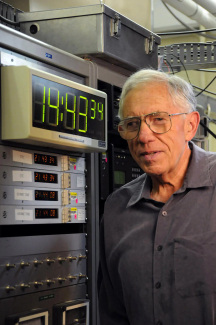In a world where the precision of timekeeping is paramount, the leap second and leap day are critical adjustments to align our clocks and calendars with the astronomical realities of Earth's orbit around the sun. JILA and NIST Fellow Judah Levine, an esteemed figure in time synchronization, recently shared his insights with The New York Times and Denver 7 News, elucidating the complexities and significance of these temporal adjustments.
The New York Times highlighted the historical and astronomical underpinnings of the leap day, a quadrennial addition to our calendar to account for the extra six hours and nine minutes it takes Earth to complete its annual orbit beyond the standard 365 days. Levine, the head of the Network Synchronization Project at the National Institute of Standards and Technology (NIST) in Boulder, Colorado, and a JILA Fellow delved into the origins of this practice, tracing it back to Julius Caesar's era. He discussed the leap day's importance in ensuring that seasonal and agricultural markers, such as the spring equinox and associated harvest festivals, remain aligned with the calendar dates intended for them. This alignment has been maintained and adjusted through history, from Caesar's initial implementation to the Gregorian calendar's refinement, to ensure that the timing of significant cultural and religious events remains consistent with the astronomical seasons.
In contrast, the Denver 7 News article focused on the concept of the leap second, a lesser-known but equally crucial adjustment made to our atomic clocks since 1972 to keep atomic time in sync with astronomical time. Without the addition of 37 leap seconds over the past decades, our timekeeping would gradually drift away from solar time, leading to a misalignment of noon with the sun's highest point in the sky. Levine explained the challenges leap seconds pose to modern computing systems, which rely on ultra-precise timekeeping, and proposed innovative solutions like replacing the leap second with a leap minute or introducing a "time smear" to minimize disruption.
Read both articles at the links below:
https://www.nytimes.com/2024/02/29/science/leap-day-easter.html
https://www.denver7.com/news/local-news/boulder-scientist-explains-why-…
Written by Kenna Hughes-Castleberry





